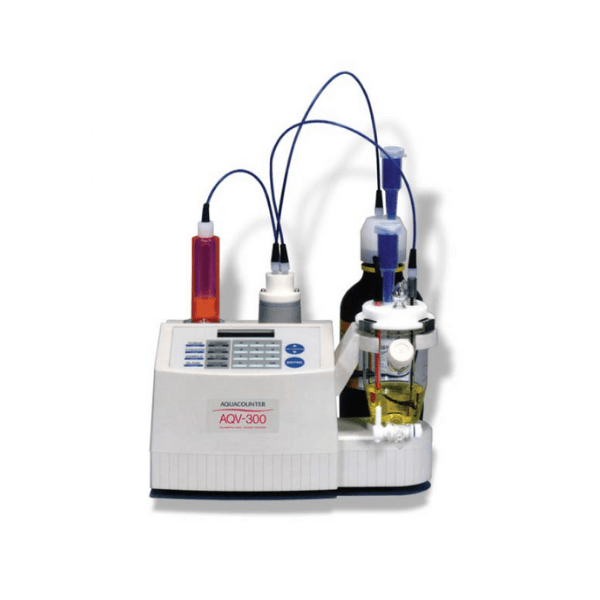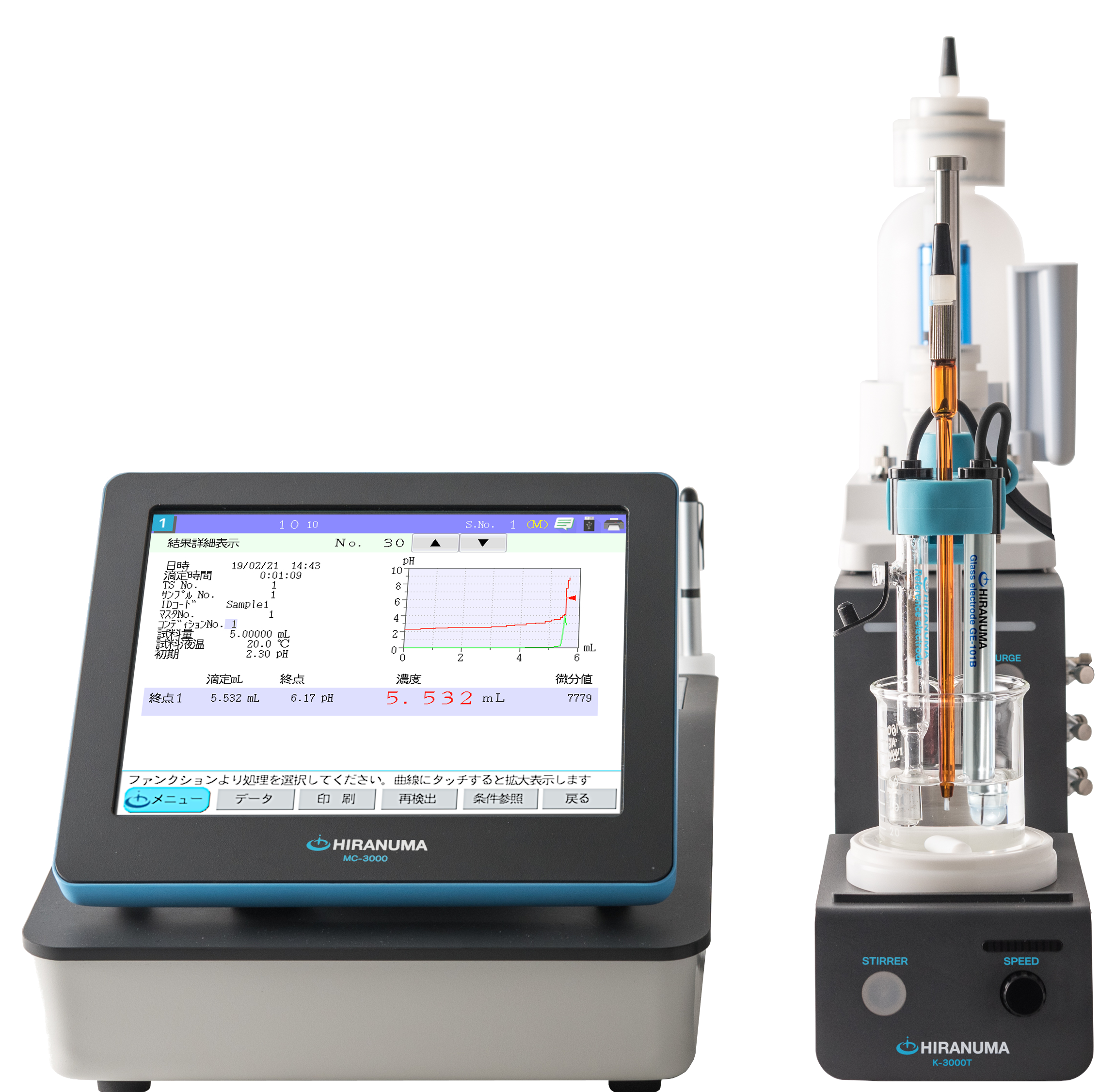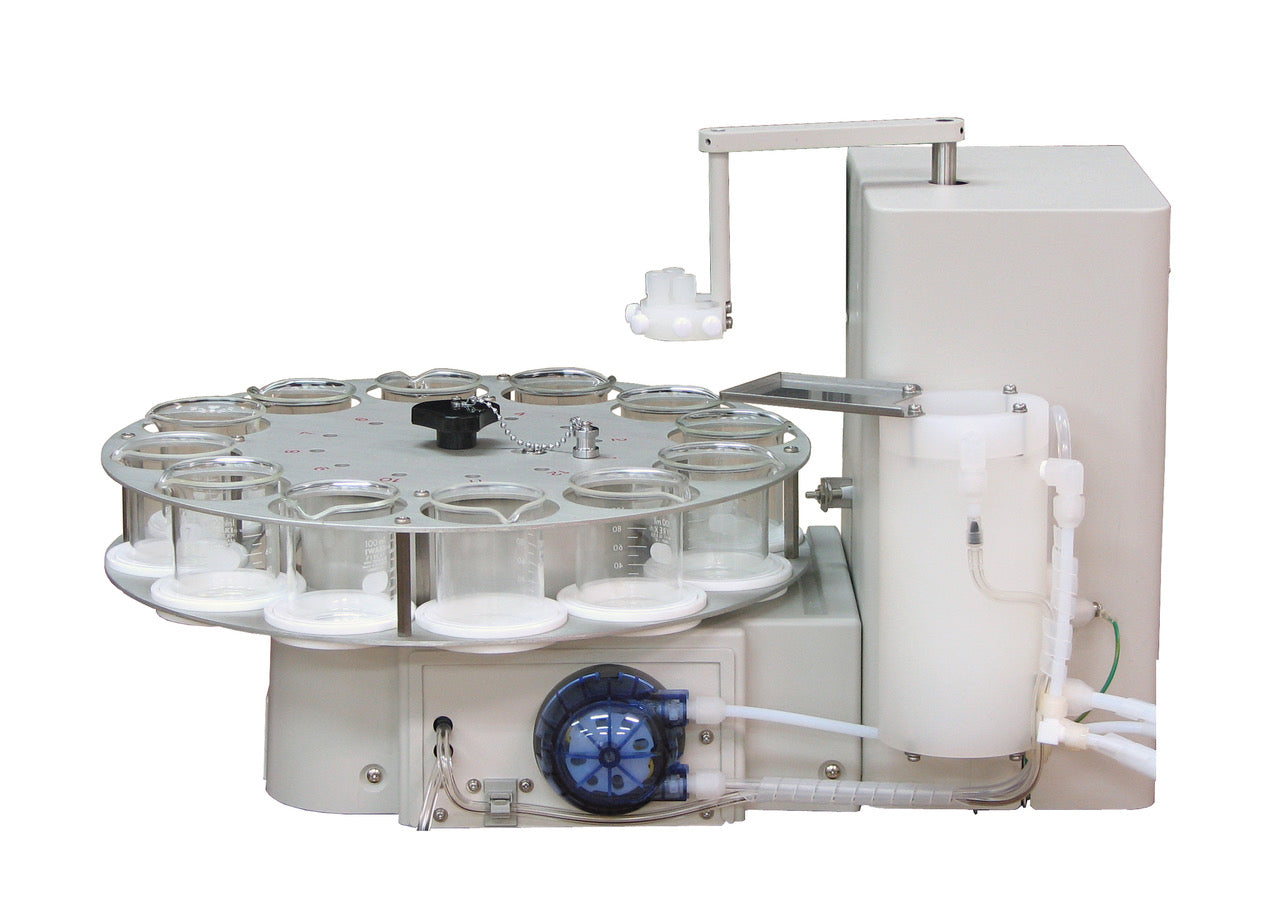Karl Fischer & Potentiometric Titration Application Library
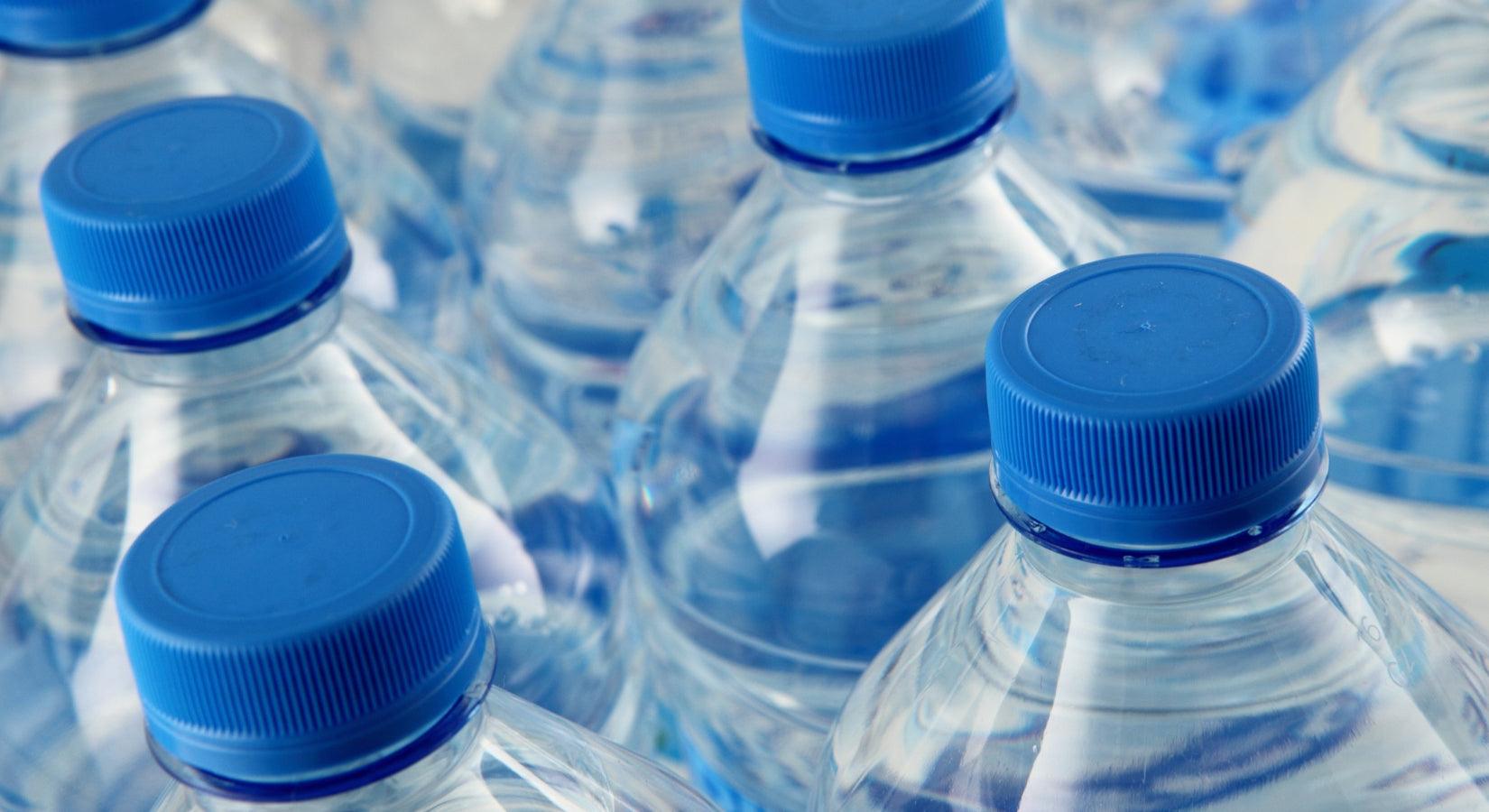
Determination of alkalinity in bottled water | Autotitrator COM-A19
Natural water contains alkaline components such as hydroxides and carbonates. Such water indicates alkaline pH, the alkalinity is used as an index. The alkalinity is expressed as mg/L of calcium carbonate (CaCO₃) equivalent for these alkaline components. Alkalinity is divided into phenolphthalein alkalinity (P alkalinity) and total alkalinity (T alkalinity or M alkalinity) by the pH value of neutralization point.
Total amount of the hydroxides and half amount of carbonates are measured when it is titrated to about pH 8.3 with sulfuric acid titrant.
2OH⁻ + H₂SO₄ → SO₄²⁻ + 2H₂O
2CO₃²⁻ + H₂SO₄ → SO₄²⁻ + 2HCO₃⁻
All of the bicarbonates are neutralized when it is titrated successively to about pH 4.8.
HCO₃⁻ + H₂SO₄ → SO₄²⁻ + 2CO₂ + H₂O
This report introduces a measurement example for bottled water using potentiometric titration as end point detection method according to Standard Methods for the Examination of Water.
Total amount of the hydroxides and half amount of carbonates are measured when it is titrated to about pH 8.3 with sulfuric acid titrant.
2OH⁻ + H₂SO₄ → SO₄²⁻ + 2H₂O
2CO₃²⁻ + H₂SO₄ → SO₄²⁻ + 2HCO₃⁻
All of the bicarbonates are neutralized when it is titrated successively to about pH 4.8.
HCO₃⁻ + H₂SO₄ → SO₄²⁻ + 2CO₂ + H₂O
This report introduces a measurement example for bottled water using potentiometric titration as end point detection method according to Standard Methods for the Examination of Water.

Calcium hardness in tap water | Autotitrator COM-A19
There are determination methods for hardness in tap water as follows: (1) Total hardness defined as the sum of calcium and magnesium ion converted to mg/L as calcium carbonate (CaCO3), (2) Calcium hardness determined by calcium ion concentration.
The measurement method for calcium hardness is similar to that of total hardness. Adjust the pH of sample water to higher than pH 12 with sodium hydroxide to mask the reaction of magnesium and EDTA. Start titration with 2-hydroxy-1-(2-hydroxy-4-sulfo-1-naphthylazo)-3-naphthoic acid (NN) indicator. Its color changes from red to blue.
CaCO₃ + Na₂EDTA → CaEDTA + Na₂CO₃
This report introduces an example of calcium hardness measurement for tap water with photometric titration method using EDTA standard solution according to the Standard Methods for the Examination of Water.
The measurement method for calcium hardness is similar to that of total hardness. Adjust the pH of sample water to higher than pH 12 with sodium hydroxide to mask the reaction of magnesium and EDTA. Start titration with 2-hydroxy-1-(2-hydroxy-4-sulfo-1-naphthylazo)-3-naphthoic acid (NN) indicator. Its color changes from red to blue.
CaCO₃ + Na₂EDTA → CaEDTA + Na₂CO₃
This report introduces an example of calcium hardness measurement for tap water with photometric titration method using EDTA standard solution according to the Standard Methods for the Examination of Water.
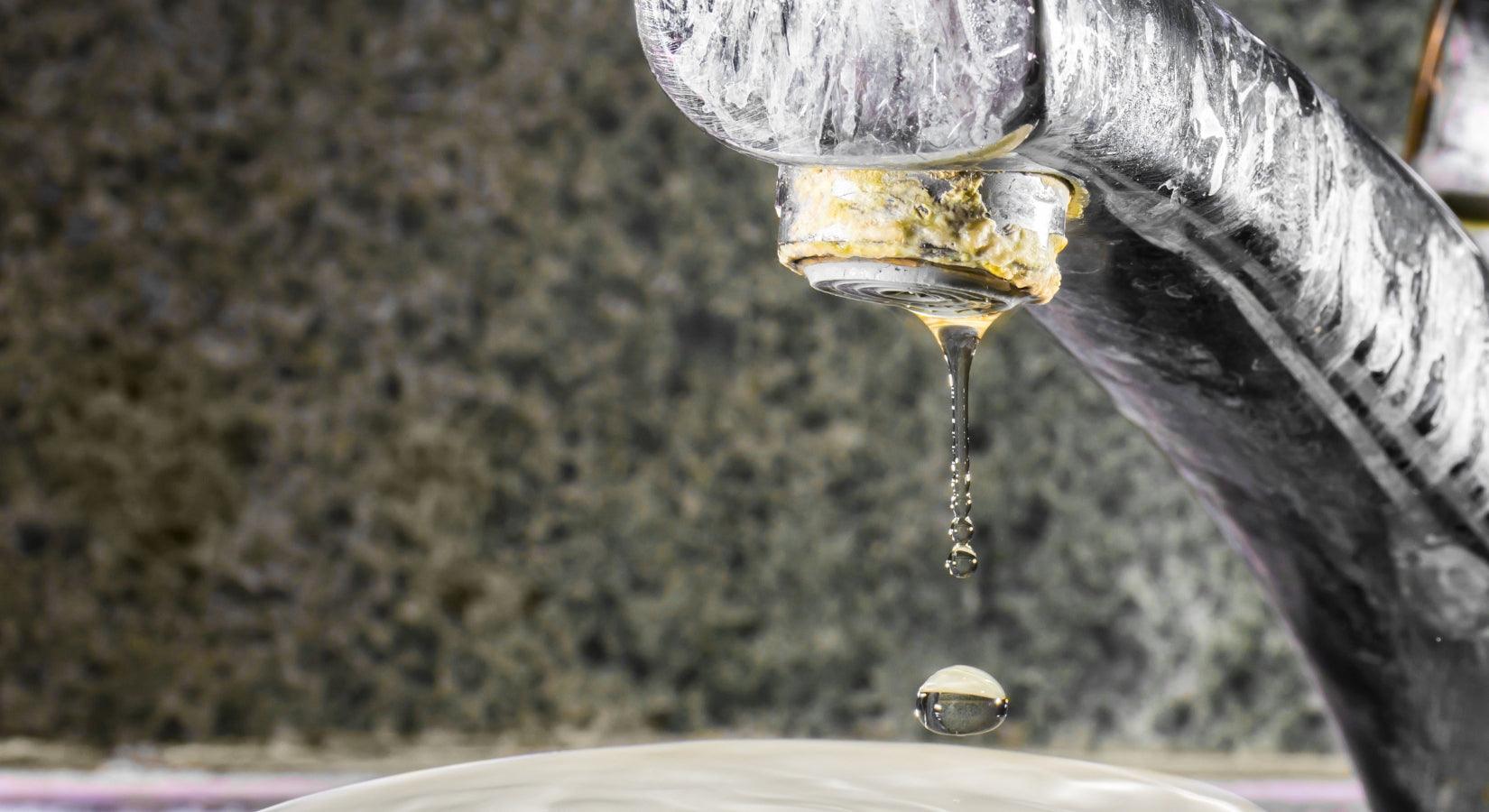
Total hardness in tap water | Autotitrator COM-A19
Hardness in water is total amount of calcium and magnesium ion in water converted to mg/L of comparable calcium carbonate. “Hardness” has the following types:
(1) Total hardness Total amount of calcium and magnesium ions
(2) Calcium hardness Calcium ion
(3) Magnesium hardness (Total hardness) – (Calcium hardness)
(4) Non-carbonate hardness (Permanent hardness)
(5) Carbonate hardness (Temporary hardness)
These are stipulated in some applicable standard such as Standard Methods for the Examination of Water, Standard Methods of Analysis for Hygienic Chemists, and JIS K0101 Testing methods for industrial water etc.
This report introduces an example for determination of total hardness in tap water with photometric titration method using EDTA standard solution according to the Standard Methods for the Examination of Water.
Take 100 mL of sample and add 1 mL of 0.01 mol/L magnesium chloride, 2 mL ammonia buffer, and 0.2 mL of EBT indicator. Titrate with 0.01 mol/L EDTA standard solution (red →blue color). Perform the same procedure for 100 mL of DI water instead of sample as blank measurement.
CaCO₃ + Na₂EDTA → Ca-EDTA + Na₂CO₃
MgCO₃ + Na₂EDTA → Mg-EDTA + Na₂CO₃
(1) Total hardness Total amount of calcium and magnesium ions
(2) Calcium hardness Calcium ion
(3) Magnesium hardness (Total hardness) – (Calcium hardness)
(4) Non-carbonate hardness (Permanent hardness)
(5) Carbonate hardness (Temporary hardness)
These are stipulated in some applicable standard such as Standard Methods for the Examination of Water, Standard Methods of Analysis for Hygienic Chemists, and JIS K0101 Testing methods for industrial water etc.
This report introduces an example for determination of total hardness in tap water with photometric titration method using EDTA standard solution according to the Standard Methods for the Examination of Water.
Take 100 mL of sample and add 1 mL of 0.01 mol/L magnesium chloride, 2 mL ammonia buffer, and 0.2 mL of EBT indicator. Titrate with 0.01 mol/L EDTA standard solution (red →blue color). Perform the same procedure for 100 mL of DI water instead of sample as blank measurement.
CaCO₃ + Na₂EDTA → Ca-EDTA + Na₂CO₃
MgCO₃ + Na₂EDTA → Mg-EDTA + Na₂CO₃
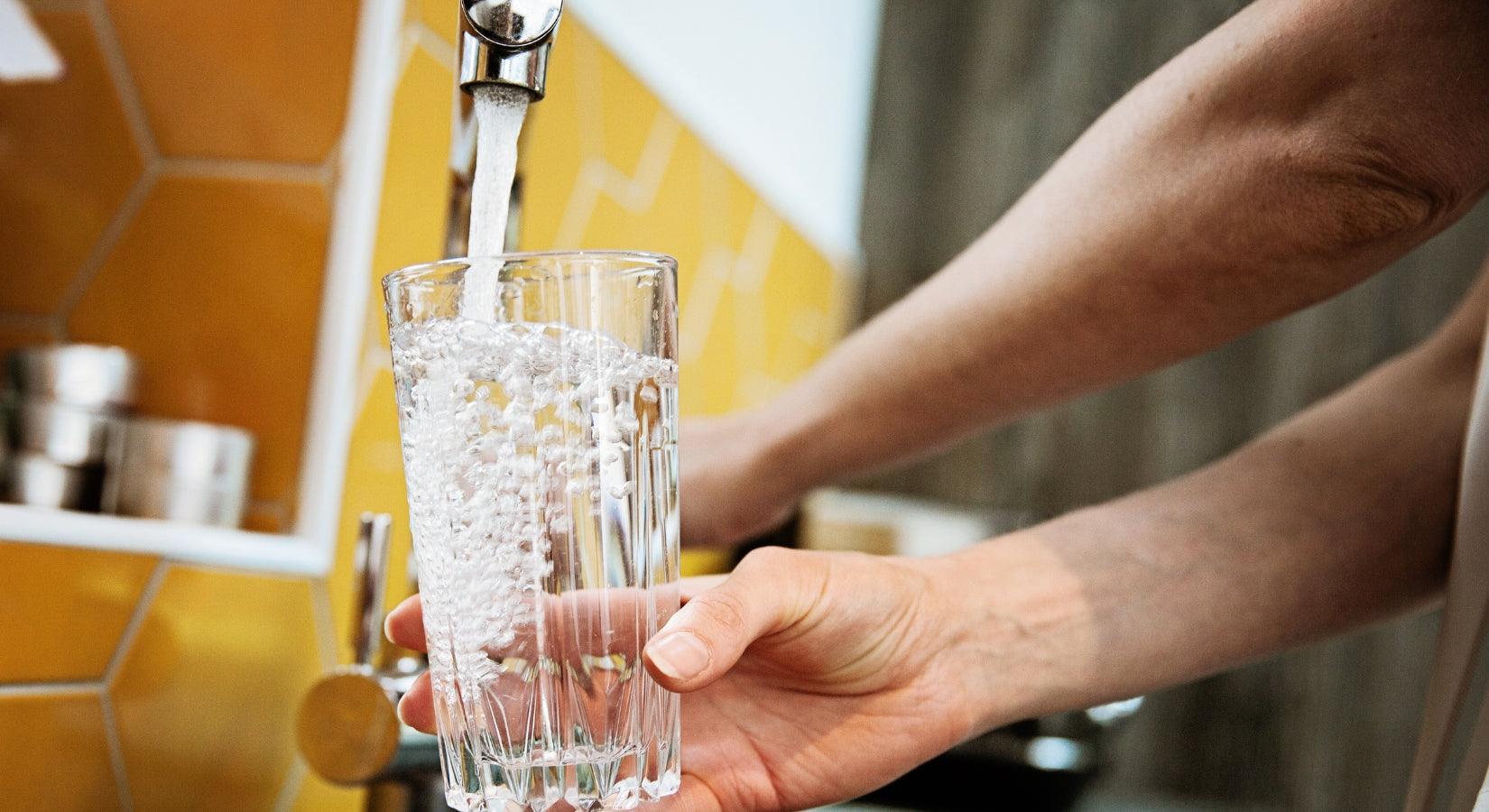
Quantitative determination of chloride ions in tap water | Autotitrator COM-A19
Quantitative determination for chloride ions in tap water is stipulated in Standard Methods for the Examination of Water, and Standard Methods of Analysis for Hygienic Chemists, etc. A small amount of chloride ion is contained in natural water, it is said to increase due to contamination of domestic drainage, industrial drainage, and farming drainage, etc. Standard Methods for the Examination of Water adopts ion exchange chromatograph method and Mohr method (titration method) as the chloride quantitative determination method. The detection limit for ion exchange chromatograph method is 0.2 mg/L. Mohr method is generally applied for samples including chloride ions in mg/L or more. This report introduces the Mohr method with precipitation titration, which quantifies chlorides by potentiometric titration with silver indicator electrode instead of the color indicator titration described in Standard Methods for the Examination of Water.
100 mL of the sample water is collected and acidified with nitric acid for potentiometric titration with silver nitrate titrant.
Cl⁻ + AgNO₃ → AgCl↓ + NO₃⁻
100 mL of the sample water is collected and acidified with nitric acid for potentiometric titration with silver nitrate titrant.
Cl⁻ + AgNO₃ → AgCl↓ + NO₃⁻

